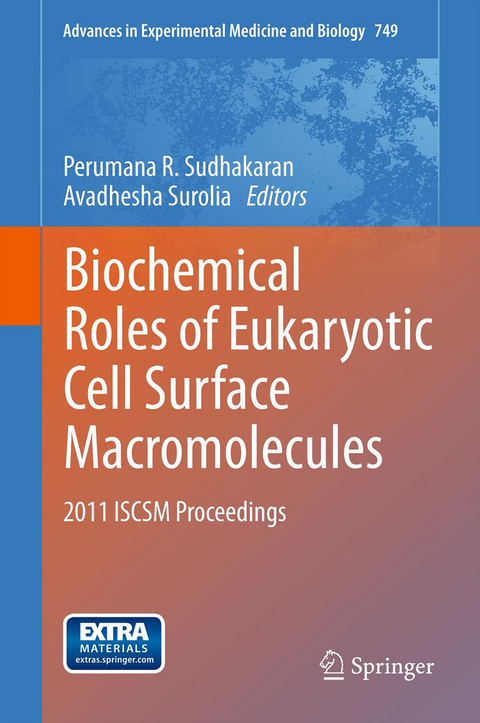
Biochemical Roles of Eukaryotic Cell Surface Macromolecules
Springer-Verlag New York Inc.
978-1-4939-0160-9 (ISBN)
Prof. Perumana R. Sudhakaran is currently the Dean of the School of Biological Sciences and Professor of Biochemistry, Central University of Kerala, Kasargod, India. His major area of research is cell extracellular matrix interaction and cell signaling. Prof. Avadesha Surolia is currently the Director of the National Institute of Immunology, New Delhi and a Professor of Molecular Biophysics at the Indian Institute of Science, Bangalore, India. His major areas of research include structure and function of lectins, orientation and dynamics of cell surface carbohydrate receptors, protein folding and quality control in the endoplasmic reticulum.
Glycomics: An overview of the complex glycocodec.- Structural Glycomic Approaches to Molecular Recognition Events on Cell Surfaces.- Chondroitin sulfate E-type structure at tumor cell surface is involved in experimental metastasis.- Chondroitin sulfate-specific novel hydrolase in human
Identification of endothelial cell surface carbohydrate-binding receptors by carbohydrate ligand mimicry peptides.- Lysosomal enzyme sorting receptors – Where did they first appear in the animal kingdom?.- Endoplasmic reticulum targeted Bcl‐2 inhibitable mitochondrial fragmentation initiates ER stress induced cell death.- Interactions between Caveolin-1and Sphingolipids and their functional relevance.- Cell Membrane Repair Pathway Involves Sensing of Dynamics of Caveolae and Caspase-1.- Angiogenic Response of Endothelial Cells to Fibronectin.- Lactosylceramide synthase as a therapeutic target to mitigate multiple human diseases in animal models.- Advanced Fret Methodologies: Protein Lipid Selectivity detection and Quantification
Mechanism of GPCR-directed Autoantibodies in Diseases.- Role of Membrane Cholesterol in Leishmanial Infection.- How Intact is the Basement Membrane? Role of MMPs.- Apoptosis of Breast Cancer Cells: IX. Modulation of Genes for Glycoconjugate Biosynthesis and Targeted Drug Delivery.- Altered expression of sialidases in human cancer
Poly-ADP-ribosylation of vascular endothelial growth factor and its implications on angiogenesis.- Sphingolipid Binding Domain in the Serotonin1A Receptor.- Withanolide-D, carrying the baton of Indian Rasayana herb as a lead candidate of anti-leukemic agent in modern medicine.- Engineered glucose to generate a spectroscopic probe for studying carbohydrate biology.- Changes in sialic acid content of jelly coat in pesticide exposed frog eggs and its influence on fertilization.
| Erscheint lt. Verlag | 11.6.2014 |
|---|---|
| Zusatzinfo | XVI, 340 p. |
| Verlagsort | New York |
| Sprache | englisch |
| Maße | 155 x 235 mm |
| Themenwelt | Naturwissenschaften ► Biologie ► Biochemie |
| Naturwissenschaften ► Biologie ► Zellbiologie | |
| Naturwissenschaften ► Chemie ► Organische Chemie | |
| ISBN-10 | 1-4939-0160-5 / 1493901605 |
| ISBN-13 | 978-1-4939-0160-9 / 9781493901609 |
| Zustand | Neuware |
| Haben Sie eine Frage zum Produkt? |
aus dem Bereich


